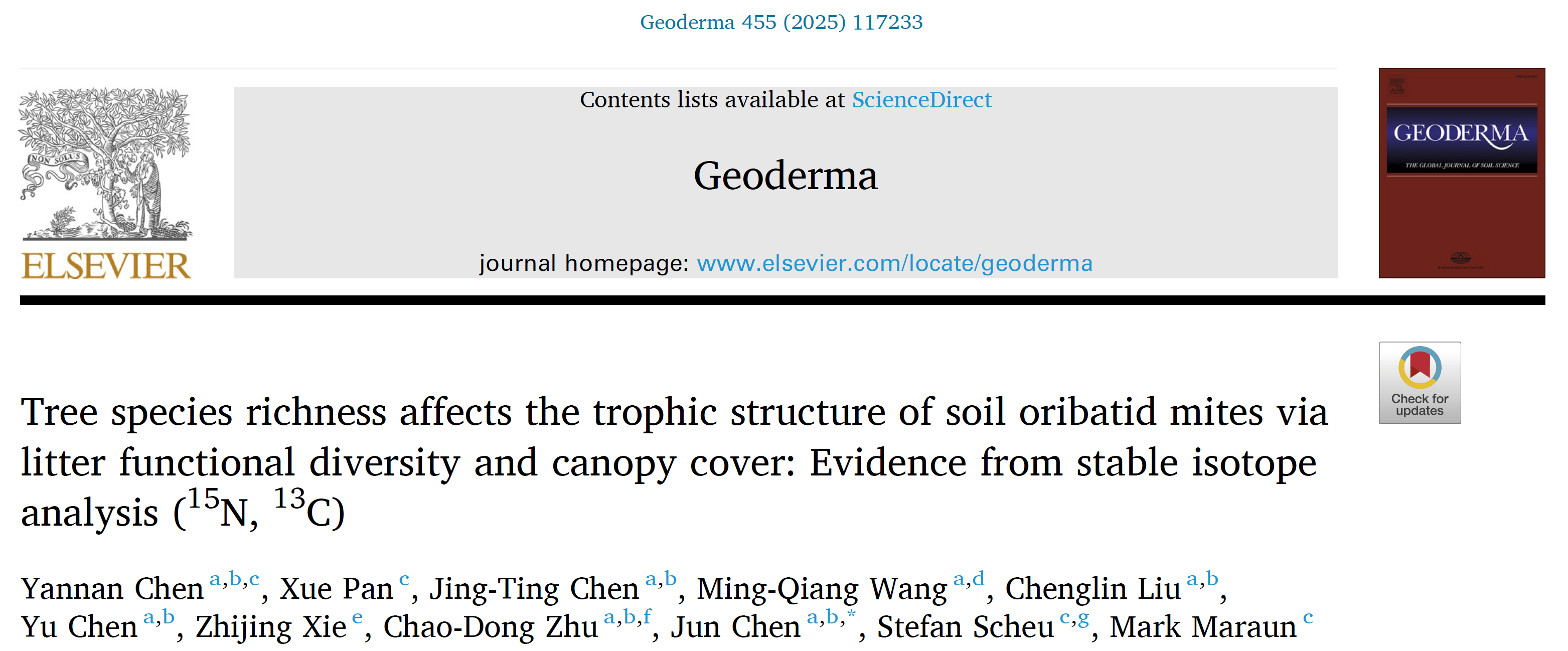Tree species richness affects biodiversity and ecosystem functioning. Investigating its effect on soil animals and their trophic ecology is crucial for understanding soil food web functioning. Despite this, the relationship between tree species richness and soil microarthropods trophic structure has rarely been evaluated. Here, we investigated the effects of tree species richness (1, 2, 4, 8, 16, 24 species) on soil oribatid mites at an experimental field site in the subtropics (BEF-China). We measured the impacts of tree species richness and oribatid mite functional traits, including body mass and reproductive mode, on oribatid mite trophic ecology using stable isotopes (15N, 13C). Moreover, we inspected if litter functional diversity, litter quality (C/N ratio) and canopy cover affect oribatid mites. The results highlighted that tree species richness influenced oribatid mite trophic ecology through litter functional diversity and canopy cover. High litter functional diversity increased the average and range of Δ15N signatures indicating an increase in trophic position and trophic plasticity of oribatid mites with increasing litter diversity. More open canopy was associated with lower Δ13C signatures and a larger range in Δ13C signatures indicating that soil food webs become more complex when light conditions are more variable. Further, high litter C/N ratio increased the average and range of 15N signatures indicating that low litter quality results in less taxa living as decomposers and more taxa living as fungal feeders or predators. Maximum Δ15N values were generally lower in parthenogenetic than sexual taxa indicating that parthenogenetic taxa more often function as primary decomposers feeding on plant litter, whereas sexual species more often function as secondary decomposers feeding on microorganisms. The Δ15N range was also higher in sexual than in parthenogenetic species indicating that sexual taxa cover a broader range of feeding types than parthenogenetic taxa. Oribatid mite species with a larger body mass had lower Δ15N and Δ13C signatures indicting that they feed on plant litter more intensively than smaller species which feed on microorganisms or live as predators more intensively. Overall, the results indicate that litter functional diversity and data on canopy cover should be included in forest management practices to modulate soil microarthropod trophic structure.
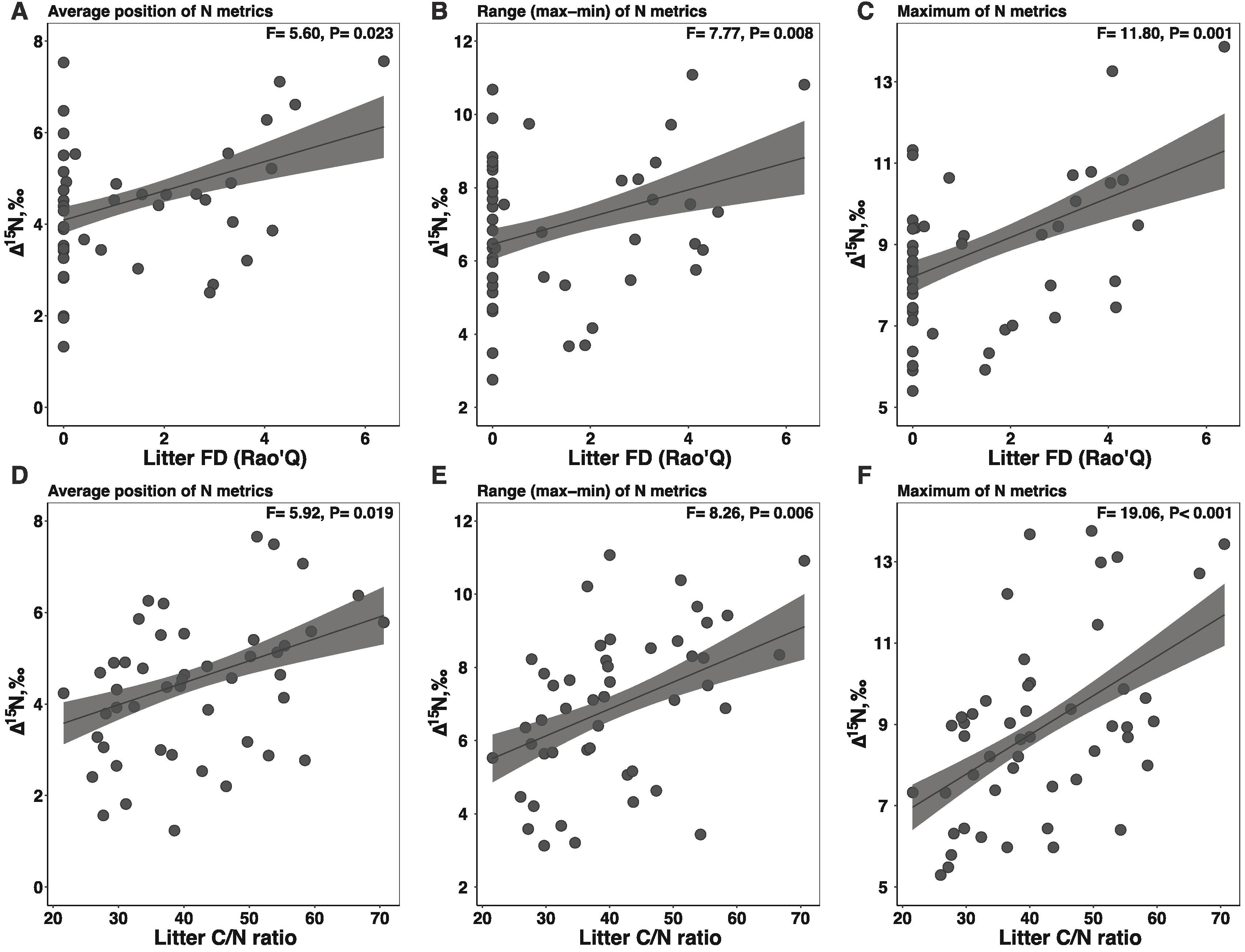
Figure 1. Correlations between litter functional diversity (FD, as measured by Rao's Q, see Methods) and average (A), range (B) and maximum (C) Δ15N values of oribatid mites, as well as between litter quality (C/N ratio) and average (D), range (E) and maximum (C) of Δ15N values of oribatid mites. Each point represents one oribatid mite community.
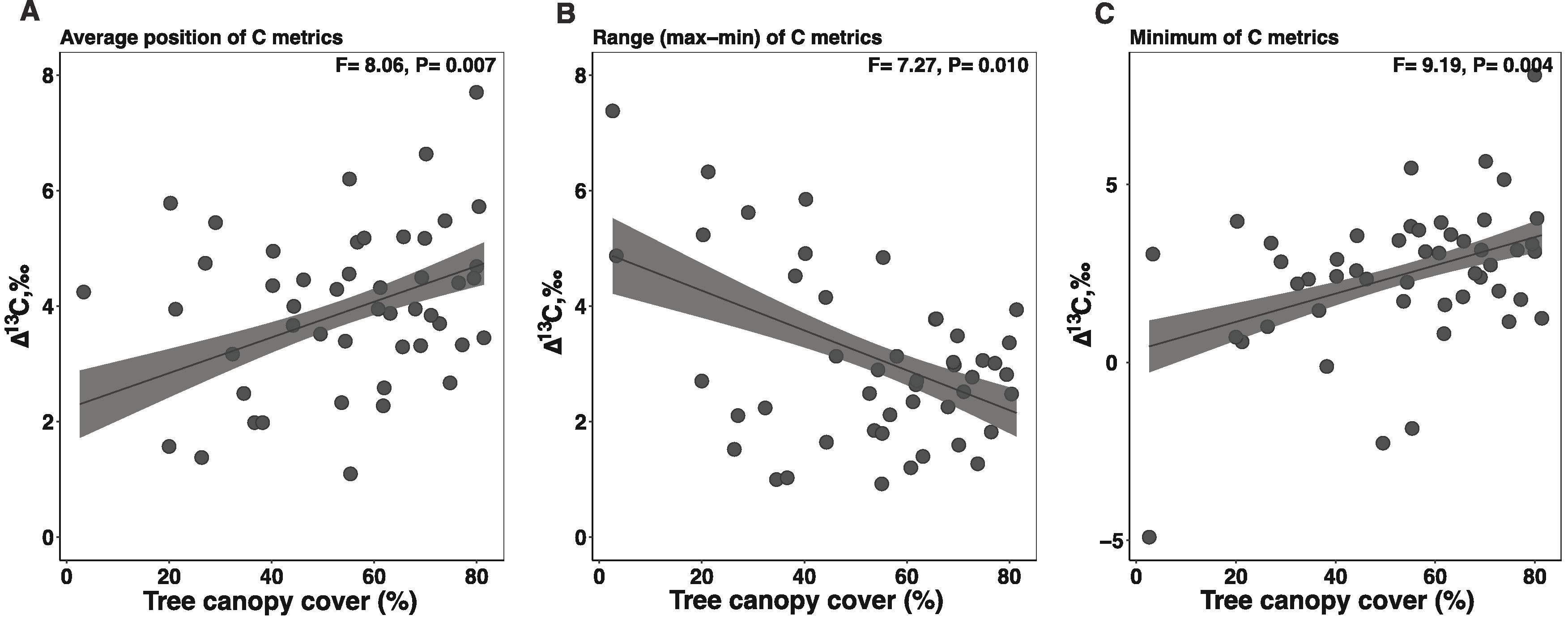
Figure 2. Correlations between tree canopy cover and average (A), range (E) and minimum (C) Δ13C values of oribatid mite communities. Each point represents one oribatid mite community.
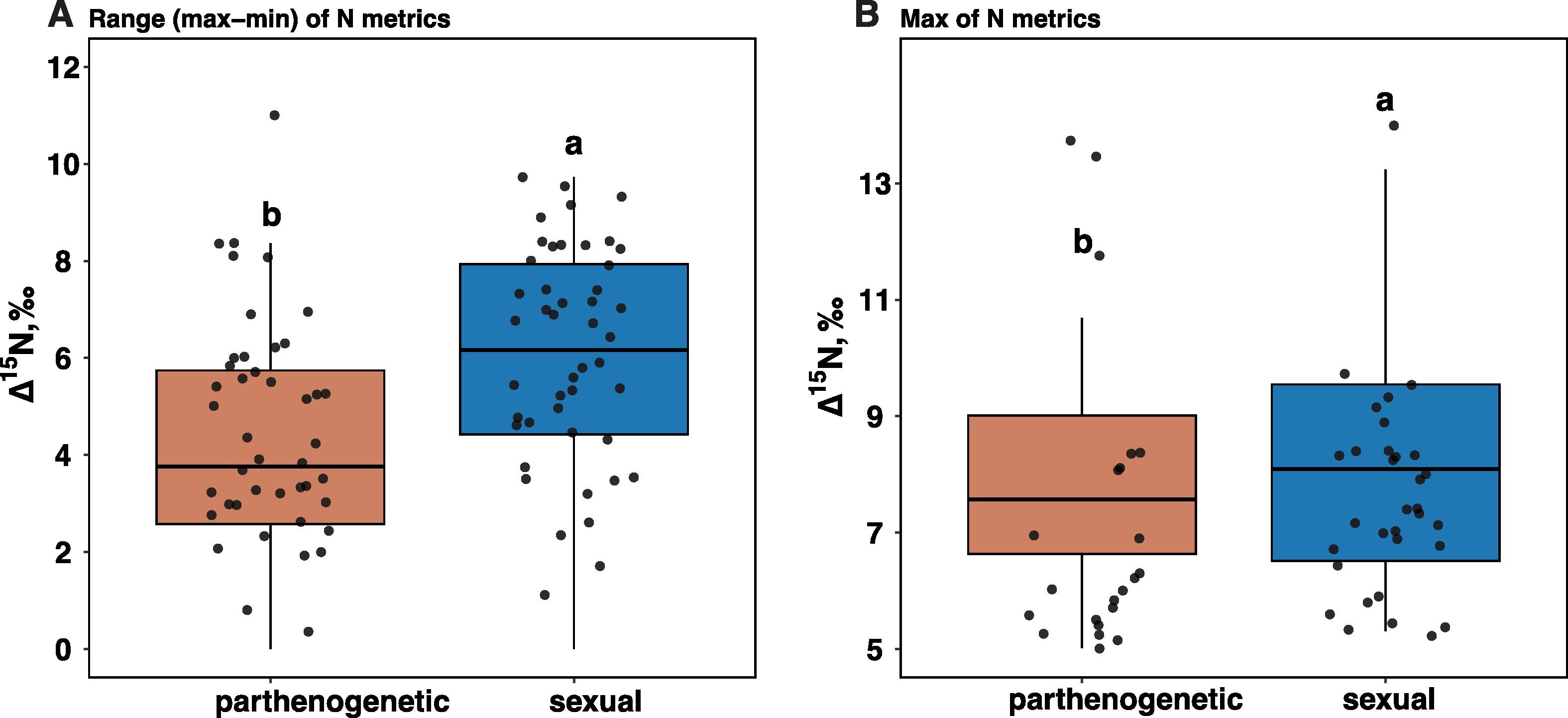
Figure 3. Range (max–min) (A) and maximum (B) Δ15N values of parthenogenetic (brown) and sexual (blue) oribatid mite species.

Figure 4. Correlations between oribatid mite body mass and average of Δ15N (A) and Δ13C (B) values of oribatid mites.
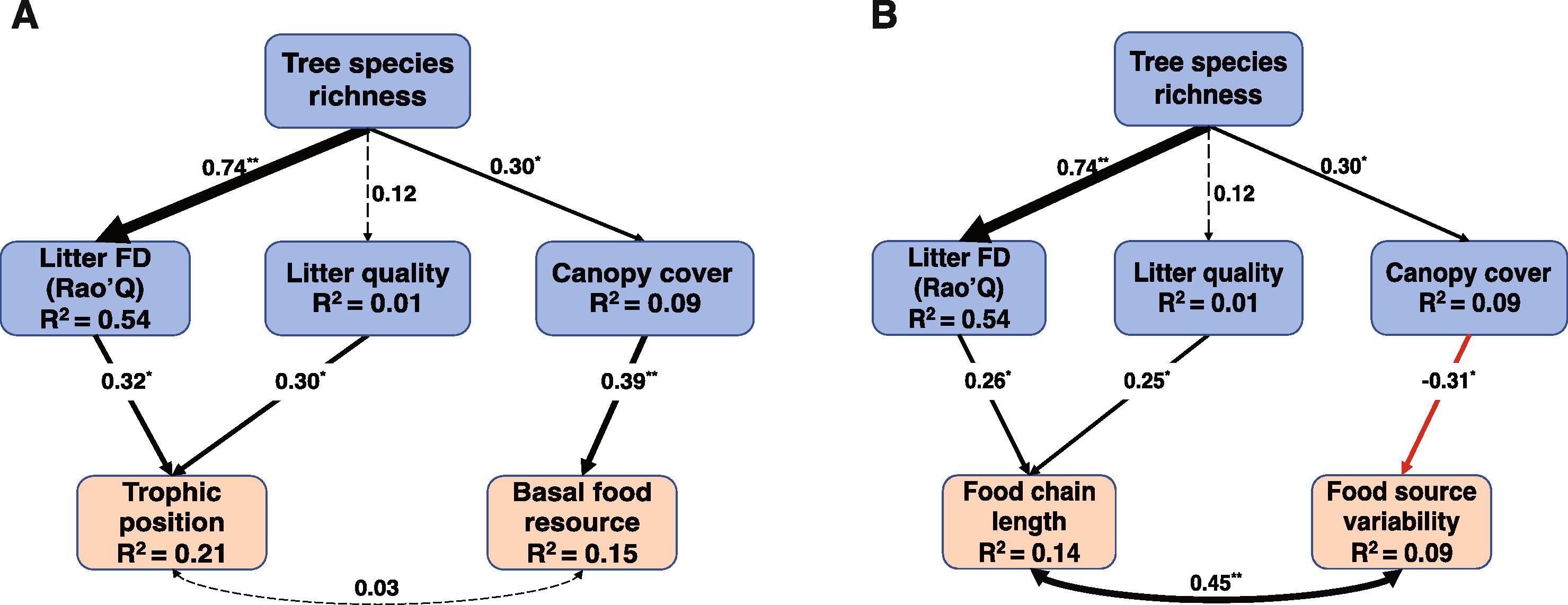
Figure 5. Path model of effects of tree species richness, tree litter functional diversity, tree canopy cover and litter quality (C/N ratio) on (A) trophic position (average Δ15N values) and basal food recourses (average Δ13C values; χ2 = 5.63, d.f. = 8, P = 0.69), (B) food chain length of oribatid mites (range of Δ15N values) and food resource variability of oribatid mites (range of Δ13C values; χ2 = 9.57, d.f. = 8, P = 0.30) of oribatid mite communities.
Literature:
Yannan Chen, Xue Pan, Jing-Ting Chen, Ming-Qiang Wang, Chenglin Liu, Yu Chen, Zhijing Xie, Chao-Dong Zhu, Jun Chen*, Stefan Scheu, and Mark Maraun. 2025. Tree species richness affects the trophic structure of soil oribatid mites via litter functional diversity and canopy cover: Evidence from stable isotope analysis (15N, 13C). Geoderma. 455:117233. https://www.sciencedirect.com/science/article/pii/S0016706125000710?via%3Dihub.
